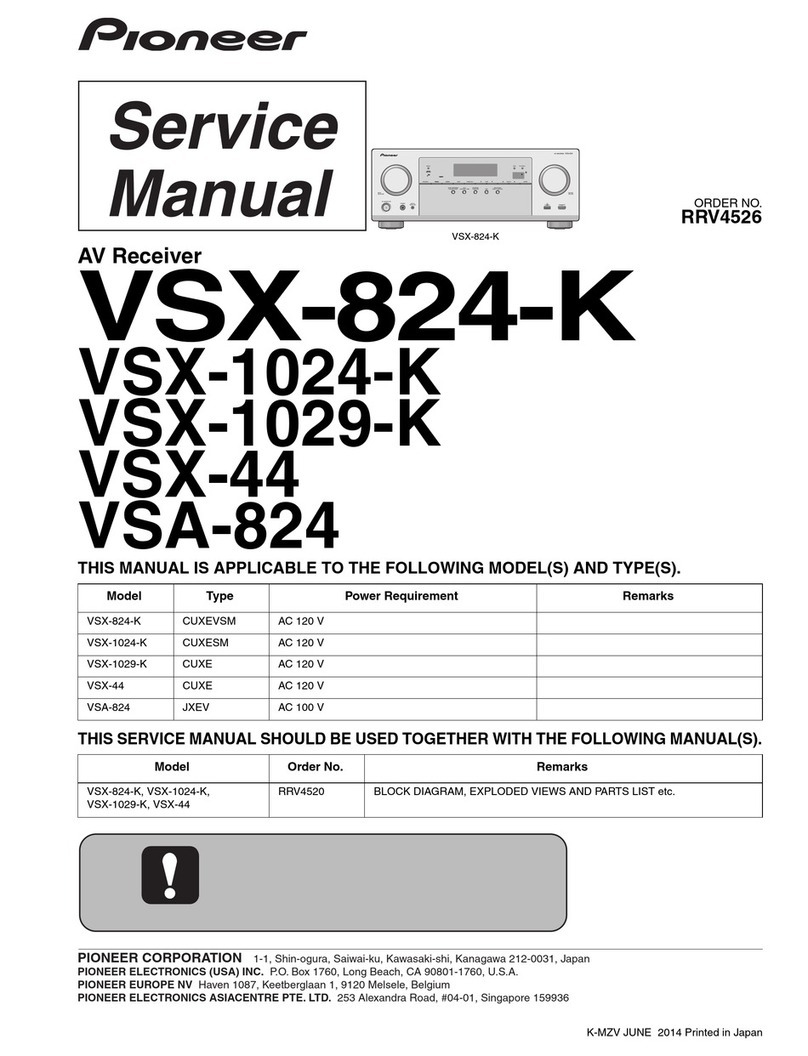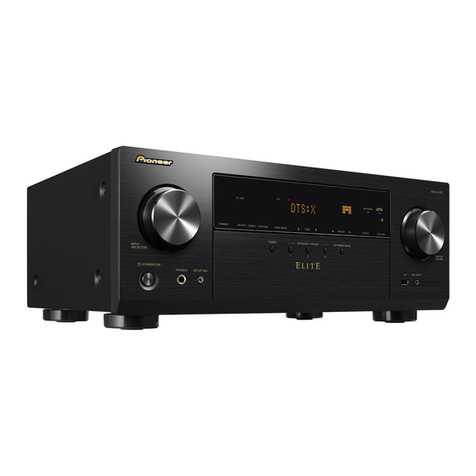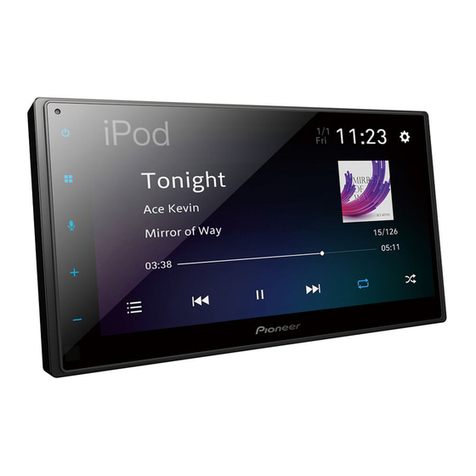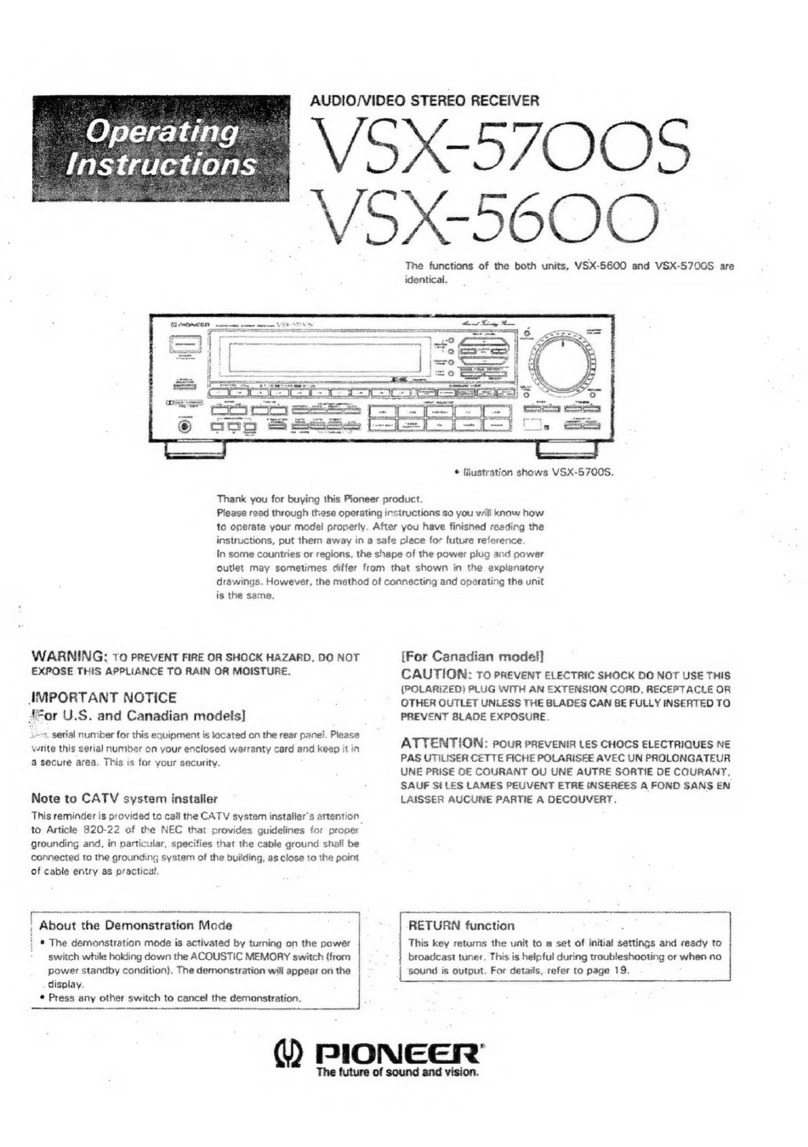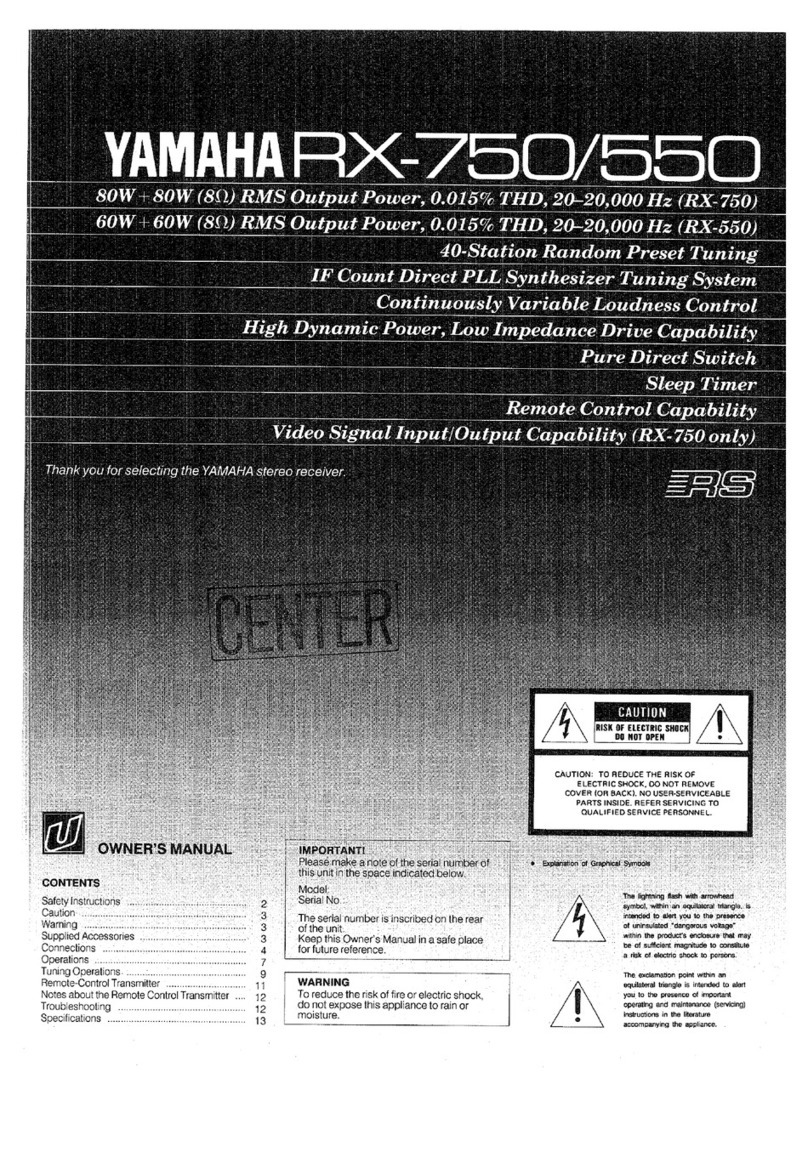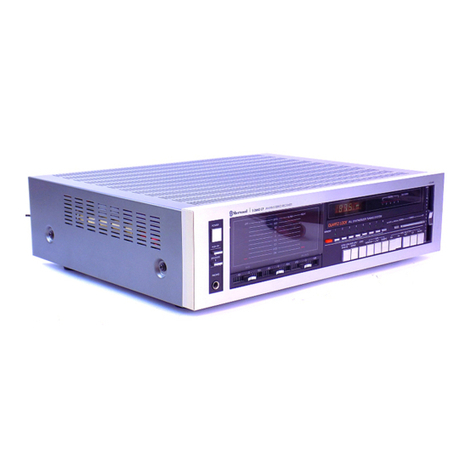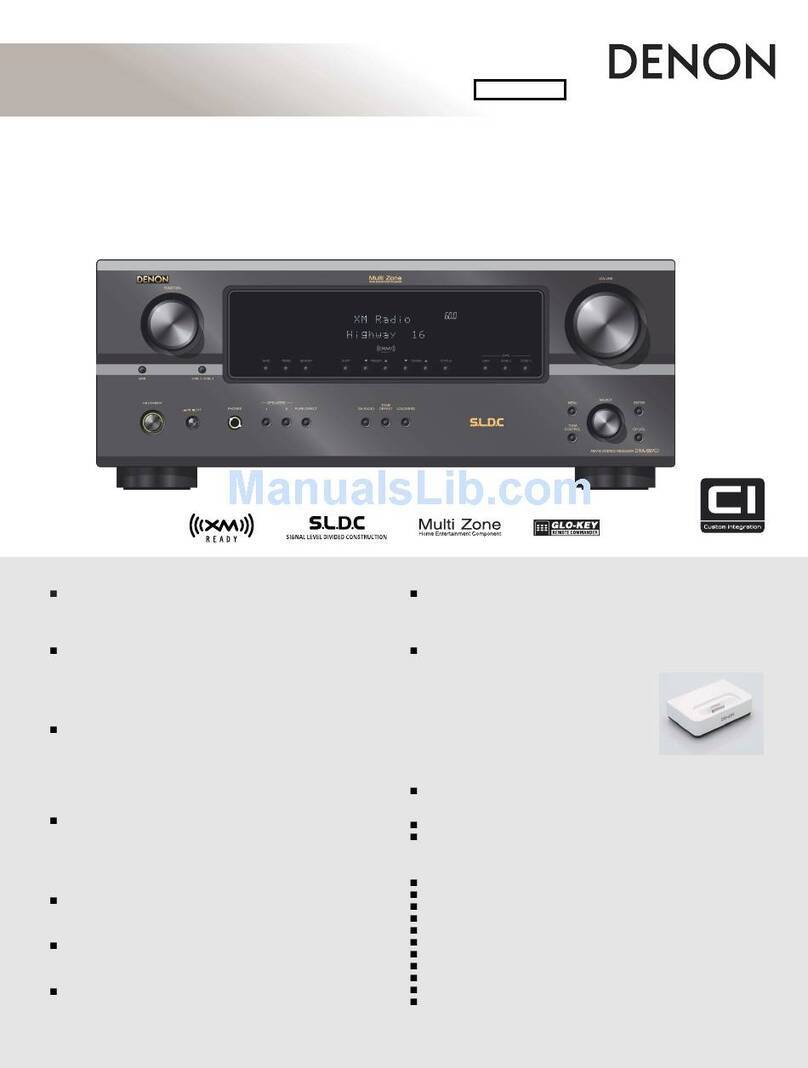Pioneer RX-1180 User manual
Other Pioneer Stereo Receiver manuals
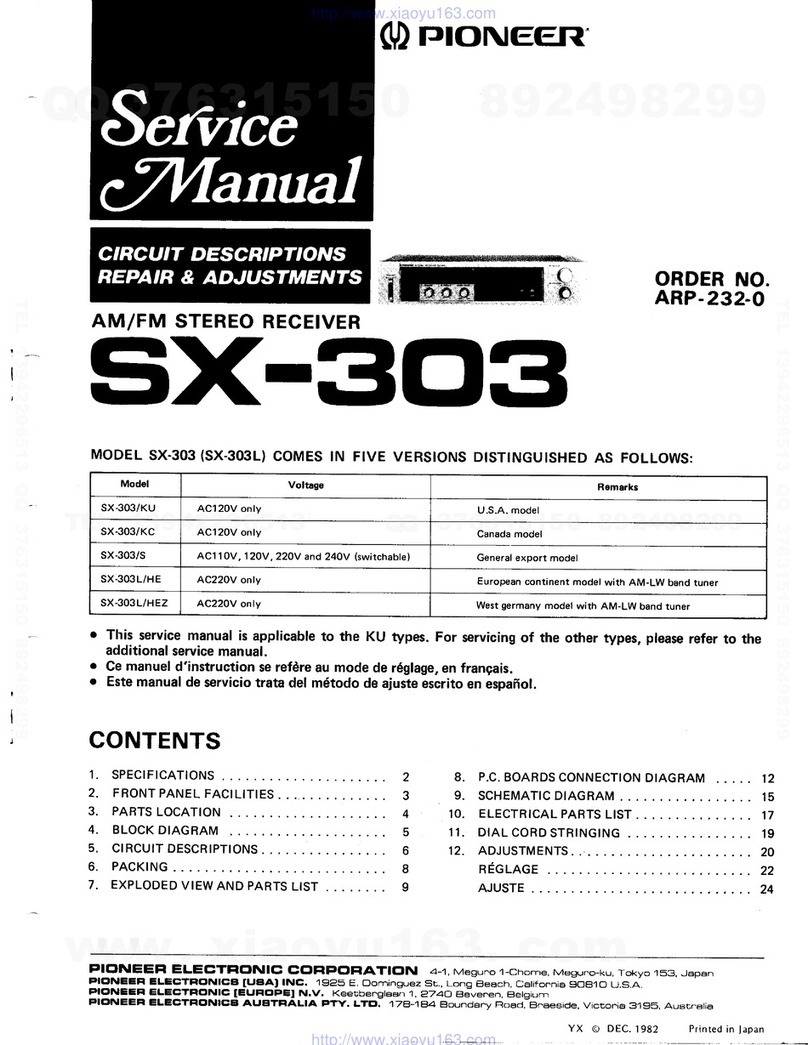
Pioneer
Pioneer SX-303 User manual

Pioneer
Pioneer AVH-8400BT User manual
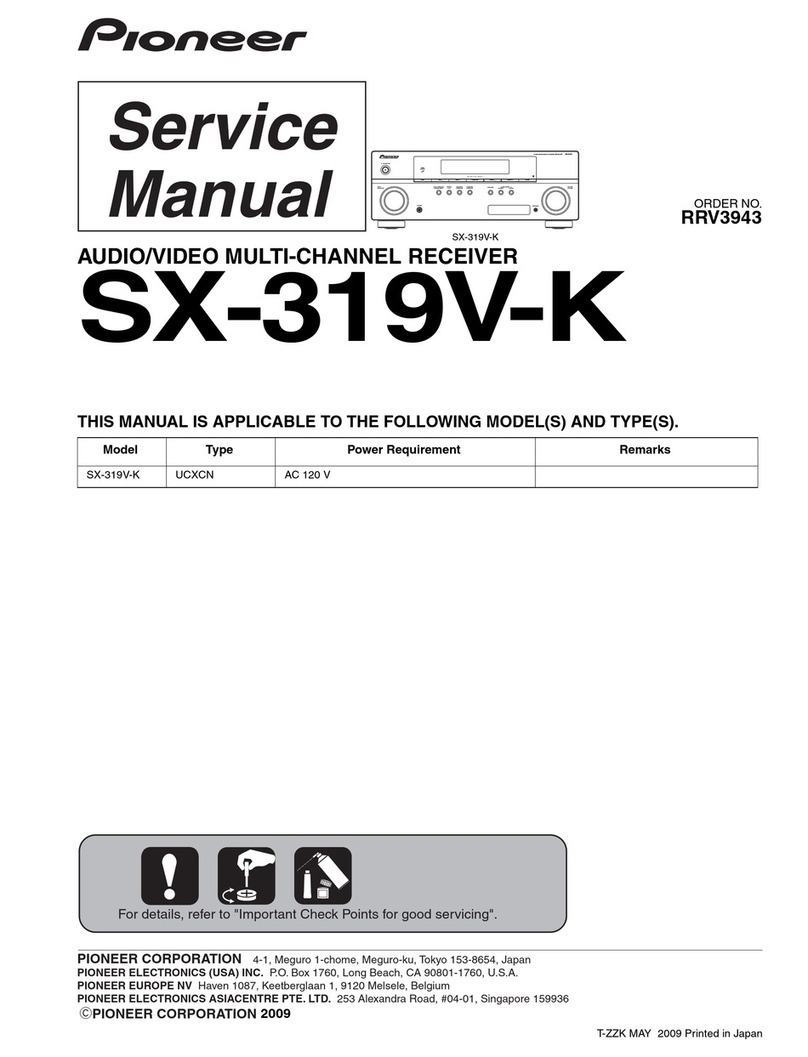
Pioneer
Pioneer SX-319V-K User manual
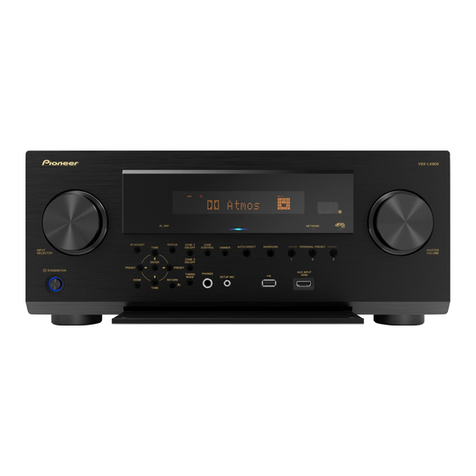
Pioneer
Pioneer Elite VSX-LX805 User manual
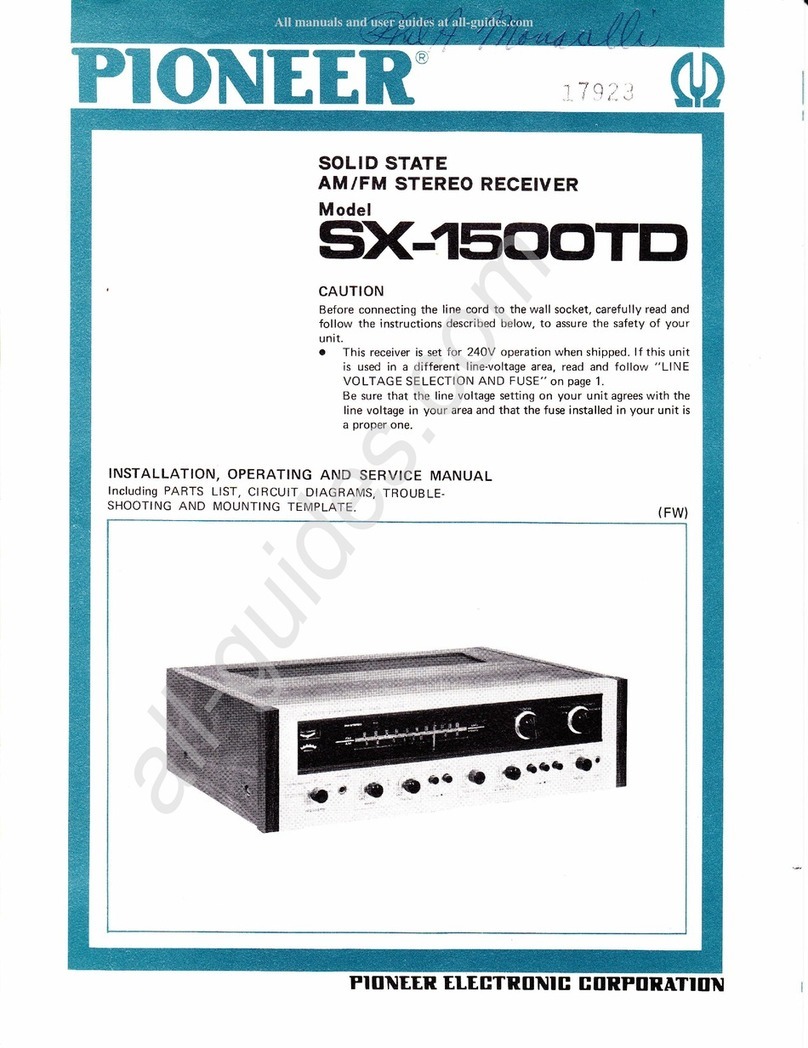
Pioneer
Pioneer SX-1500TD Service manual

Pioneer
Pioneer SX-1250 User manual

Pioneer
Pioneer VSX-405 User manual

Pioneer
Pioneer SX-3700 User manual

Pioneer
Pioneer SX-303 User manual

Pioneer
Pioneer SX-337 User manual

Pioneer
Pioneer AVH-A2350BT User manual
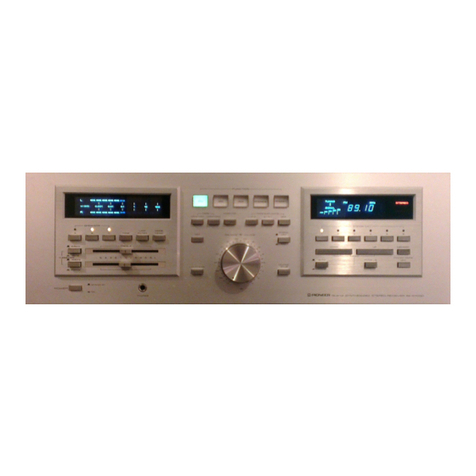
Pioneer
Pioneer SX-D7000 User manual

Pioneer
Pioneer AVH-6300BT User manual
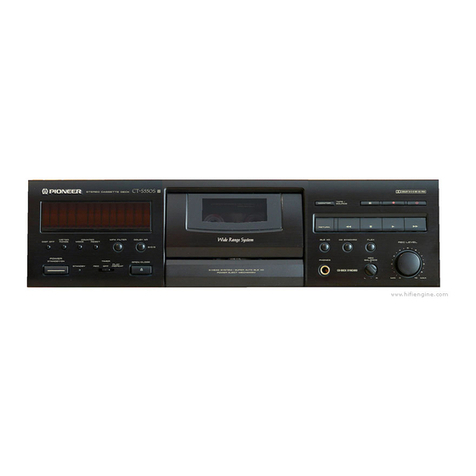
Pioneer
Pioneer CT-S550S User manual
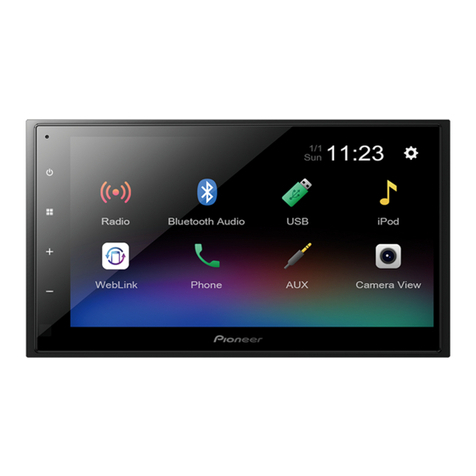
Pioneer
Pioneer DMH-A345BT User manual

Pioneer
Pioneer VSX-AX5Ai-S User manual
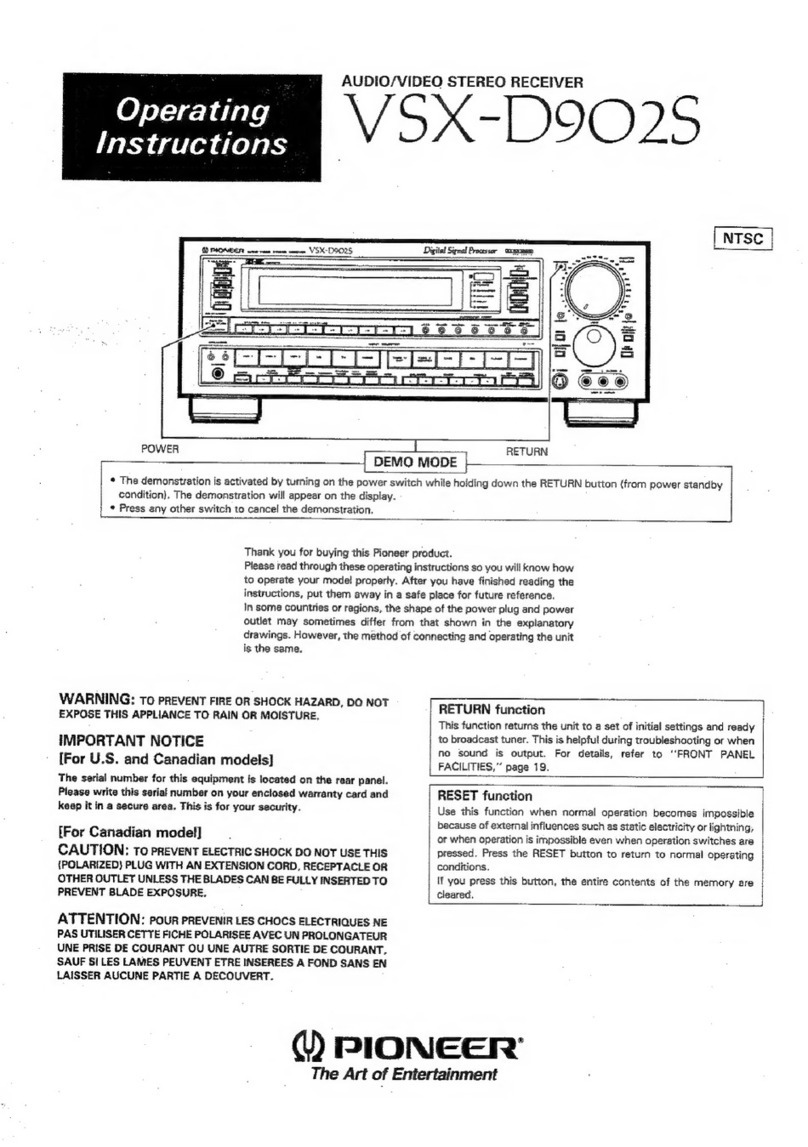
Pioneer
Pioneer VSX-D902S User manual

Pioneer
Pioneer SX-255R User manual
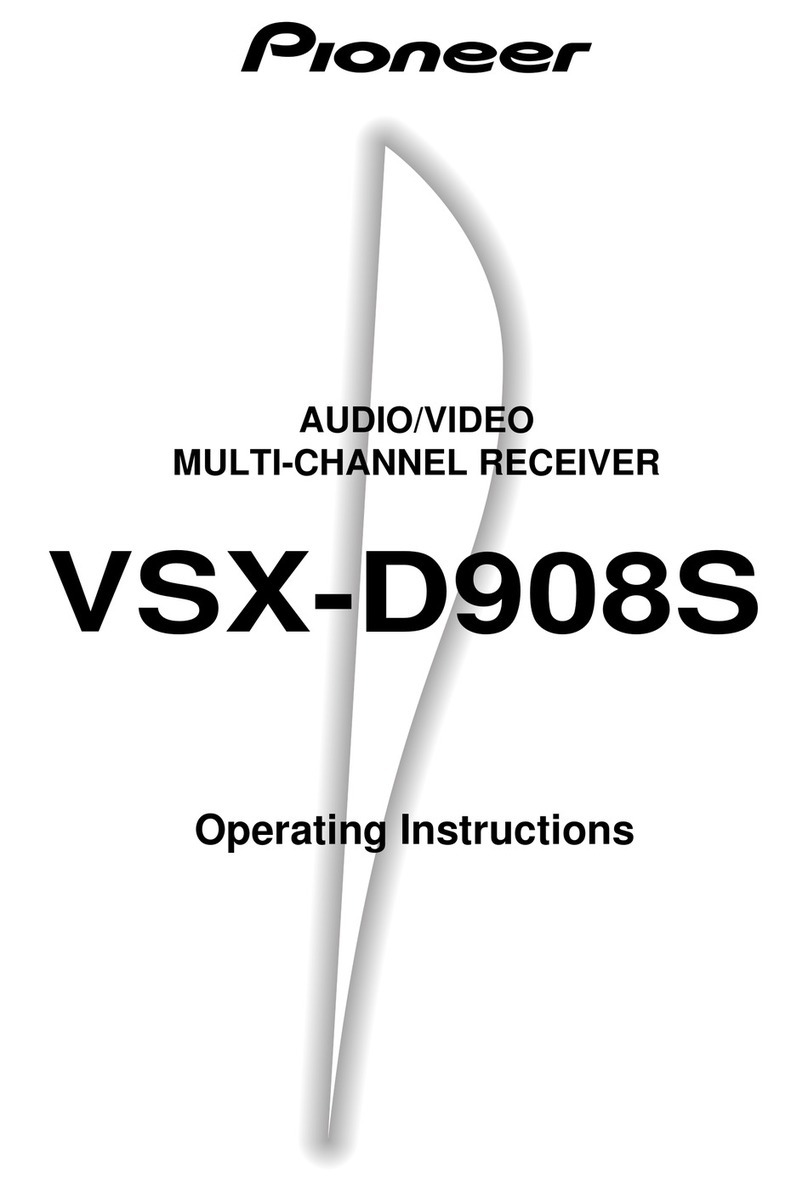
Pioneer
Pioneer VSX-D908S User manual

Pioneer
Pioneer AVH-120BT User manual
Popular Stereo Receiver manuals by other brands

Denon
Denon AVR-X7200W Service manual

Sony
Sony XAV-1500 operating instructions

Radio Shack
Radio Shack DX-399 owner's manual

Sony
Sony STR-DE535 - Fm Stereo/fm-am Receiver operating instructions

Yamaha
Yamaha MusicCast TSR-5B3D owner's manual
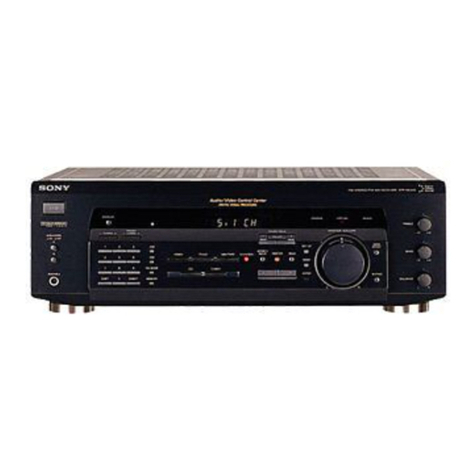
Sony
Sony STR-DE335 - Fm Stereo/fm-am Receiver operating instructions
